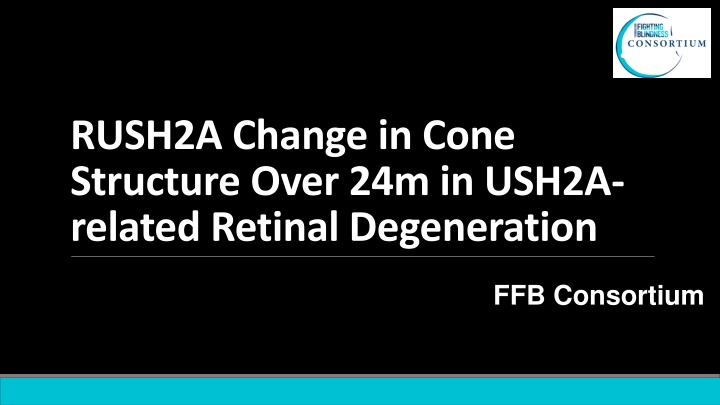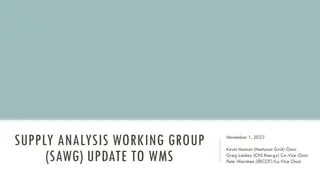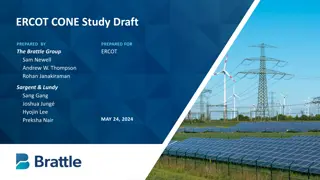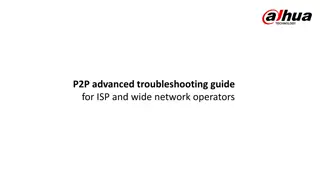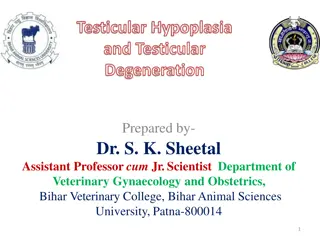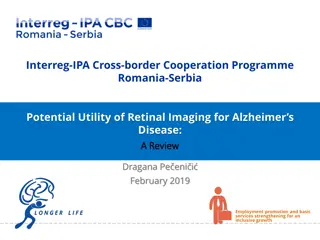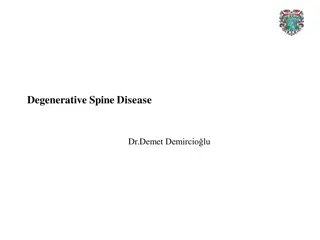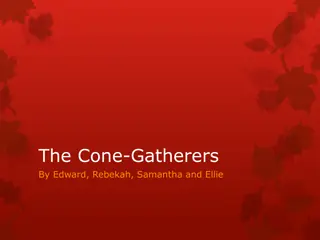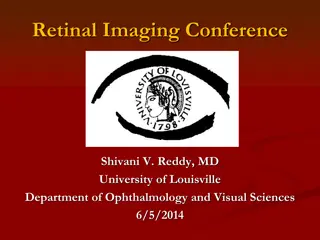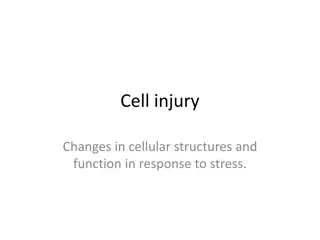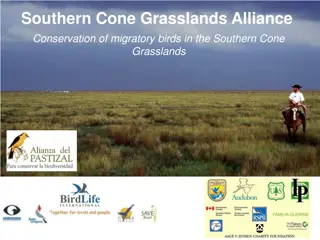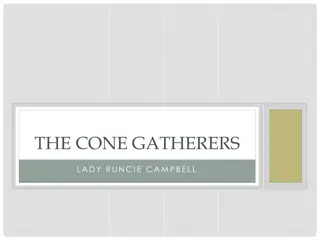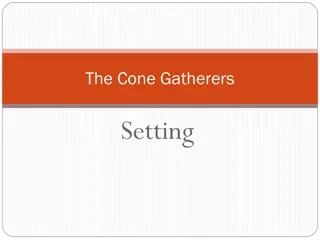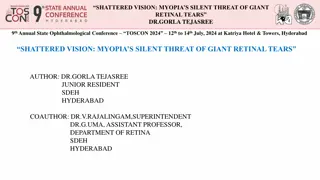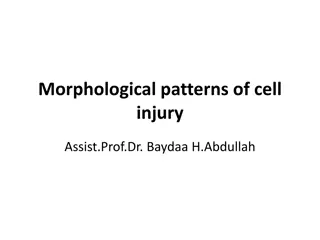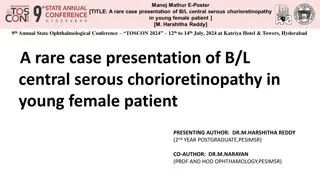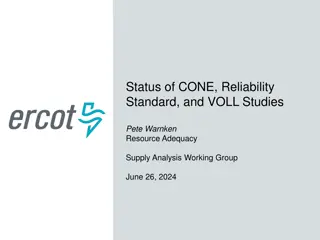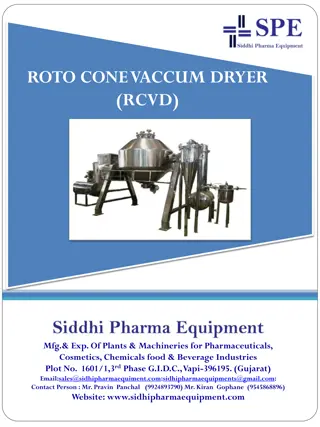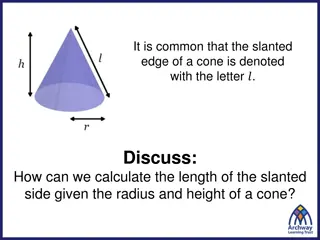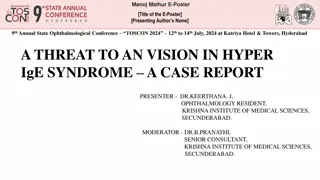Cone Structure Changes in USH2A-related Retinal Degeneration
This study focuses on describing cone structure changes in USH2A-related retinal degeneration using high-resolution images obtained through Adaptive Optics Scanning Laser Ophthalmoscopy (AOSLO). The research aims to explore cone spacing variability, track changes over time, and compare findings between USH2 and ARR patients.
Uploaded on Mar 16, 2025 | 1 Views
Download Presentation

Please find below an Image/Link to download the presentation.
The content on the website is provided AS IS for your information and personal use only. It may not be sold, licensed, or shared on other websites without obtaining consent from the author.If you encounter any issues during the download, it is possible that the publisher has removed the file from their server.
You are allowed to download the files provided on this website for personal or commercial use, subject to the condition that they are used lawfully. All files are the property of their respective owners.
The content on the website is provided AS IS for your information and personal use only. It may not be sold, licensed, or shared on other websites without obtaining consent from the author.
E N D
Presentation Transcript
RUSH2A Change in Cone Structure Over 24m in USH2A- related Retinal Degeneration FFB Consortium
Background Prior studies have not described cone structure with high-resolution images of USH2A-related retinal degeneration AOSLO Non-invasive method Visualize cone photoreceptors with high resolution 4 RUSH2A centers with AOSLO expertise: UCSF, MCW, Moorfields, Paris
Adaptive Optics: Imaging Individual Cones Confocal AOSLO: Rejects light from any layer not conjugate to the plane Cone IS/OS junction waveguides light when OS/RPE is intact I2 - I3 I2 + I3 Split Detector AOSLO: Collects multiply scattered light Reveals structure from all layers Mitochondria in IS scatter strongly 50 m Scoles et al. (2014)
Objectives To describe baseline cone spacing (at RUSH2A 12 mo visit) To explore inter-grader and inter-test variability To describe cone structure changes overtime AOSLO twice at baseline 1-year AOSLO images 2-year AOSLO images To compare cone spacing in USH2 vs ARRP patients
Methods Two baseline AOSLO montages of the cone mosaic were obtained from each of 14 participants with USH2A- related retinal degeneration 32 participants were eligible Goal: 2 baseline AOSLO montages 1 AOSLO montage at each annual visit
Methods Two graders masked to disease category measured cone spacing cone density image quality score (1= poor, 5= excellent) Poor quality images (image quality score = 0) were confirmed not gradable by a masked clinician.
AOSLO Examples A) Color fundus photo AOSLO montage SD-OCT B-scans through the fovea (green lines) B) Magnified AOSLO montage Regions of interest (ROIs) in red boxes Green box: ROI magnified on next slides
AOSLO Examples Cone mosaic: cone profiles of varying reflectivity
AOSLO Examples Cones marked by 3 independent graders Cone spacing (CS, average nearest neighbor in arcminutes) Quality score (QS) assessments by each grader Scale bar, 0.1 degree
Statistical Methods Cone spacing -> robust measure of cone structure Cone spacing measures were converted to Z-scores Z-scores were based on cone spacing at the same location among 40 normal people aged 18 to 82 Inter-test and inter-grader variability were evaluated using intraclass coefficient (ICC) and Bland-Altman plots Cone spacing was compared with clinical characteristics using weighted linear mixed effects regression Weights were determined using quality score as the inverse Root-Mean Square Deviation (RMSD)
Study Participant Count Summary 32 pts consented 14 continued USH2: 6 ARRP: 8
Study Cohort Overall N=14 Characteristic Gender Male Race/Ethnicity White Hispanic Asian Enrollment area United States/Canada Europe/UK 10 (71%) 11 (79%) 1 (7%) 2 (14%) 8 (57%) 6 (43%)
Study Cohort Overall Characteristic N=14 Age at enrollment, years Median (IQR) Age of onset, years Median (IQR) Duration of Disease, years Median (IQR) 38 (27, 48) 21 (14, 42) 12 (6, 16)
Association Between Z-score and Participant Characteristics at Baseline Z-score Model Estimate (Weighted) -1.40 -0.41 -0.09 0.04 -0.27 -1.21 -0.18 0.19 -0.22 Univariate P value Adjusted P value 0.21 0.75 0.21 0.56 0.13 <0.001 0.008 0.007 0.14 Clinical diagnosis (ARRP) Sex (Male) Grader Test number Site Eccentricity (degree) Quality score Disease duration, years Number of regions of interest (ROIs) <0.001 0.004 0.02
BL Inter-test Variability (Z-scores) ICC = 0.76
BL Inter-grader Variability (Z-scores) ICC = 0.70
Cone Spacing (arcmin) Over 24 Months Baseline 12M 24M Outcome (N=763) (N=254) (N=292) 1.36 (0.23) 1.33 (1.20, 1.48) 1.39 (0.25) 1.36 (1.22, 1.49) 1.37 (0.23) 1.33 (1.20, 1.46) Mean (SD) Median (IQR) Range 0.72 to 2.26 0.89 to 2.26 0.80 to 2.04
Cone Density (cones/mm2) Over 24 Months Baseline (N=763) 12M (N=254) 24M (N=292) Outcome 22827 (8752.4) 21457 (16936, 27311) 20173 (7830.6) 19028 (14529, 23954) 21835 (8334.0) 20411 (15983, 26765) Mean (SD) Median (IQR) 2252 to 64616 4682.0 to 52298 8082.0 to 55206 Range Cone density had a significant negative correlation with cone spacing (-0.74 with 95% CI -0.76 to -0.71).
Cone Spacing (Z-score) over 24 months Baseline (N=763) 12M (N=254) 24M (N=292) Outcome 1.36 (2.55) 0.86 (-0.27, 2.45) 1.53 (2.57) 1.09 (-0.24, 2.90) 1.80 (2.78) 1.22 (0.01, 2.92) Mean (SD) Median (IQR) Range -4.37 to 13.95 -3.13 to 12.95 -3.12 to 15.27
Cone Spacing (arcmin or Z- score) vs Eccentricity Arcmin Z-score
Estimated Average Annual Change Z-score Outcomes Entire cohort (N=14, n=1309) Univariate P value Cone spacing Annual change 95% Conf. Interval Number of ROIs Annual change 95% Conf. Interval 0.14 <0.001 (0.07, 0.21) -0.18 <0.001 (-0.23, -0.12)
Z-score and Other Measurements Correlation between Z-score with below measurements were explored BCVA FST OCT EZ Area MP mean sensitivity No significant correlation (cross-sectional or longitudinal)
Quality Score Intergrader variation (Z-score) difference Greater at ROIs with image quality scores of 1 and 2 vs 3-5 Median 1.50 vs 1.18 vs 0.69 (P < 0.001) Lower image quality was associated with greater difference between graders mean increase = 0.13 arcmin/1 point quality score decrease P=0.005
Discussion At baseline: Cone spacing and density correlated with eccentricity Cone spacing correlated with disease duration Longer disease duration results in fewer cones remaining Cone spacing was not significantly different between USH2 and ARRP participants that were eligible for AOSLO imaging
Discussion Image quality was significantly lower for the second baseline montage, suggesting one baseline image is sufficient Adding a qualitative image quality score can be a useful approach to handle inter-grader inconsistencies while minimizing the loss of data
Discussion Although cone spacing and density did not change significantly over 24 months, Cone spacing Z score increased (+0.14, 95% confidence interval 0.07 to 0.21, P < 0.001) Correcting for eccentricity, distance between cones increased during 24 months follow up We observed a significant reduction of gradable ROIs with remaining cones -0.18 ROIs/year, 95% confidence interval -0.23 to -0.12 P < 0.001
Conclusions Longer disease duration was associated with greater cone spacing Image quality was lower with repeat imaging at baseline We observed a significant increase in cone spacing Z-score over 24 months The number of gradable ROIs with remaining cones declined over 24 months We did not find a significant difference between USH2 and ARRP participants at baseline, or in the rate of change
Writing Committee Members Jacque Duncan (Lead) Allison Ayala Isabelle Audo Joseph Carroll Jenna Cava Janet Cheetham Todd Durham Kate Grieve Angelos Kalitzeos Joseph Kreis Wendi Liang Maureen Maguire Michel Michaelides Nathaniel Norberg Michel Paques Travis Porco Jessica Wong
